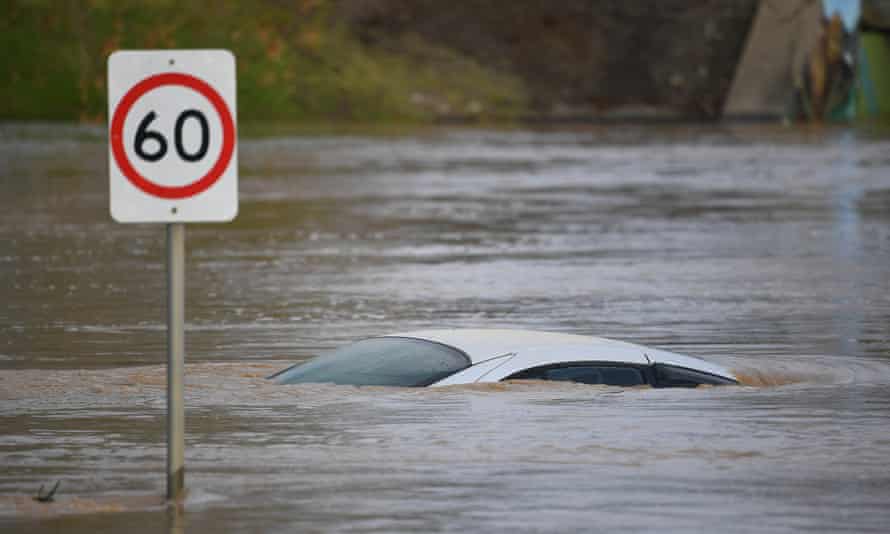Extract from The Guardian
The Morrison government’s ‘technology, not taxes’ mantra ignores the fact that taxes pay for technology, and affordable technology can make a difference.
- Major climate changes inevitable and irreversible - IPCC’s starkest warning yet
- IPCC’s verdict on climate crimes of humanity: guilty as hell
- Climate crisis ‘unequivocally’ caused by humans, says IPCC
- Download the free Guardian app; get our morning email briefing

First published on Tue 10 Aug 2021 03.30 AEST
How many wake-up calls on the climate does Australia need?
It is an unanswerable question, of course – we’ve been here too many times before to pretend otherwise – but everyone should read the summary of the latest report by the Intergovernmental Panel on Climate Change, regardless. Using careful scientific language, it tells the story of what is happening across the planet with a bracing clarity that is at once familiar and alarming.
From an Australian perspective, it confirms that on average temperatures are 1.4C hotter than early last century. It is unequivocally – unarguably, unambiguous and indisputably – due to human influence. Deadly heatwaves have increased, there are more extreme fire days, the bushfire season is longer and sea levels are rising faster than the global average, pushing back the shoreline in many places. There is a high confidence that all of this will get significantly worse.
We know all this, of course – the IPCC report is an authoritative statement on research that has already been published.
We know the catastrophic bushfires that burned across Australia two summers ago were the most extensive on record and had a climate signal. We know the Great Barrier Reef suffered three mass coral bleaching events in five years. We know the country’s ecosystems are being pushed to the edge. We know that seasonal changes linked to climate change led to farm profits in Australia falling 23% over 20 years.

And we know damage across the planet in this extraordinary year is consistent with previous scientific warnings. An unprecedented heat dome over the American Pacific north-west, wildfires in Europe and North America, devastating floods in western Europe and China, a climate-linked famine in Madagascar – this is how it happens, how we have been told for years it will happen.
Recent studies suggest there are signs that the Gulf Stream is losing stability, that a study found the Amazon – which by rights should be a massive carbon sink – has been releasing more carbon dioxide than it absorbs, and that a destabilisation of the massive Greenland ice sheet is likely under way. Each would be a tipping point with global consequences.
Without ever straying into politics, the latest report illustrates the vast gulf between what qualifies as climate policy and debate in Australia and what is required to address the problem. The Morrison government’s response to criticism of its climate performance is to list what it says is evidence of action where there is next-to-none. It gets away with this, in part, through tricks of carbon accounting.
As Scott Morrison said in parliament on Monday, the most recent national greenhouse accounts released in June suggests emissions have fallen 20% over the past 15 years, a statistic that you could assume represents some (limited) progress.
In reality, as analyses by government officials and others have shown, fossil fuel use in Australia has barely moved. The government has been able to claim it is taking action purely because the historically rapid rate of forest clearing for farming, logging and development slowed – but not stopped – earlier this decade.
This land-based fall in emissions mostly happened under Labor, not the Coalition, and mostly had nothing to do with federal policy. It was possible only because Australia has not yet finished cutting down its native forests. Most other wealthy nations were cleared centuries ago.
Here is the key point, as spelled out this week in a study by energy analyst Hugh Saddler: if changes in farming and land-clearing are excluded, fossil fuel emissions in Australia increased by more than 6% between 2005 and when Covid-19 struck. Try selling that number as evidence of an inevitable economic transformation under way.
The government’s response on Monday was to repeat its mantra that “technology, not taxes” could solve the problem. It’s a slogan that ignores that taxes pay for technology development, and technology that can make a difference already exists and, in the words of the ClimateWorks Australia chief Anna Skarbek, is in many cases “mature and available”. The world still needs better technology, but it also needs policy that deploys the available technology at a pace that recognises the scale of the threat.

With less than three months until the Cop26 global climate conference in Glasgow, the main question being directed at the Morrison government on climate is whether it will belatedly join more than 100 other countries in adopting a target of reaching net zero emissions by 2050, and lay out a plan to get there. The IPCC report makes clear the main game is what countries – and particularly the biggest 20 or so emitting nations including Australia and, yes, China – are willing to do now.
This still matters because, though it may be easy to miss amid the dire headlines, the report lays out some reason for hope, however qualified. The crisis is in motion, with some changes in oceans and ice possibly irreversible for millennia, and global heating of 1.5C above pre-industrial levels – a benchmark enshrined in the Paris agreement – is almost certain to be reached. But the scientists found aggressive action could see it dip back below that level later this century.
Scientists involved with the report are at pains to stress that, whatever the outcome, every fraction of a degree will make a difference.
Many of the world’s biggest developed countries now have commitments that could put the world on a 1.5C path if delivered and matched elsewhere. Business and global investors worth trillions are increasingly singing from a similar sheet, and not all of it is greenwash. More than ever, there are potential solutions within reach.
But the IPCC report shows there is no room for countries the size of Australia to engage in political sophistry based on misleading data, or to hide behind technology-focused delaying tactics that echo positions held by the Howard government nearly 20 years ago. The scientists would never use this language, but its central point could be summarised as: the bullshit has to end.
No comments:
Post a Comment